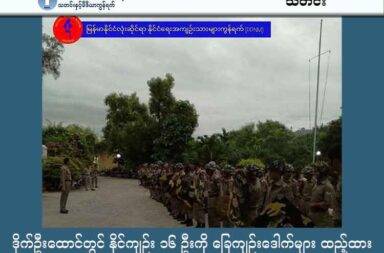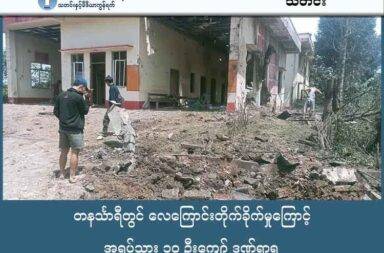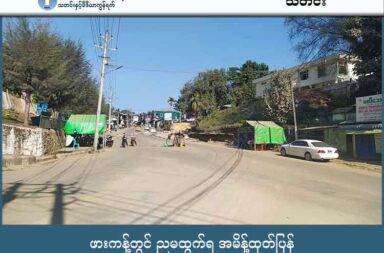Shan CSO: Construction of Upper Kengtawng Hydropower Dam a Threat to Peace
Damming the Nam Teng—a Salween tributary—for the second time will exacerbate negative environmental and social impacts, Action for Shan State Rivers says.
By NETWORK MEDIA GROUP (NMG)
Friday, December 21, 2018
Shan State’s upper Kengtawng hydropower dam will have severe environmental and social consequences if completed, a Shan civil society organization said on Thursday in Chiang Mai, Thailand.
In an event at Chiang Mai University, the group Action for Shan State Rivers launched the report “From scorched earth to parched earth,” and called for the dam to be halted. Construction has been ongoing since 2009, and is the second such initiative on the Nam Teng River, a 560-kilometer tributary of the Salween originating in Mong Kurng Township.
From 1996 until 1998, prior to the construction of the first Nam Teng dam, more than 300,000 people were forcibly relocated from 11 Shan State townships in the area by the Burma Army. In 2005, construction of the first hydropower project began.
Nang Hom, who spoke at Thursday’s event, is from one of the affected townships along the Nam Teng River—Langkhur.
“Local people have faced many difficulties because they were forced to relocate from their village. In addition to this, government forces have been deployed around villages for ‘security reasons.’ Therefore, even villagers who didn’t need to relocate from their village have also faced other worrying things,” she told NMG.
Of the 50 original villages in the Kengtawng area, where the new Upper Kengtawng dam on the Nam Teng is planned, only 10 remain. According to Action for Shan State Rivers’ report, most of the villagers from the area migrated to Thailand due to conflict, militarization and the subsequent difficulties in pursuing their livelihoods.
The dam currently under construction is larger than the existing one, which is operating at a third of its capacity, but has caused water levels to drop significantly—a phenomenon that is apparent in the reduced flow of large waterfalls like Zong Arng, whose seven cascades have decreased to five.
Before the water dried up, the dam initially created flooding that has had long-lasting consequences for agriculture, Nang Hom explained.
“After the [first] dam construction was completed, water levels rose about 400 meters. It flooded houses and vegetable farms. There was a lot of damage in the area. Soil in the farms has been damaged since that time,” the researcher said in press conference.
Risks of the additional Upper Kengtawng dam include threats to the ecosystem and the survival of fish in the Nam Teng, as well as drought and public health consequences due to poor water quality. As with other hydropower projects, there is also a fear of dam collapse, Action for Shan State Rivers stated.
The organization called on the Burmese government to halt the construction of the dam—and all large hydropower projects in conflict areas—until there is a political settlement to the ongoing civil war. It also recommended foreign governments stop investment in such projects, describing these dams as undermining peace in the country.


